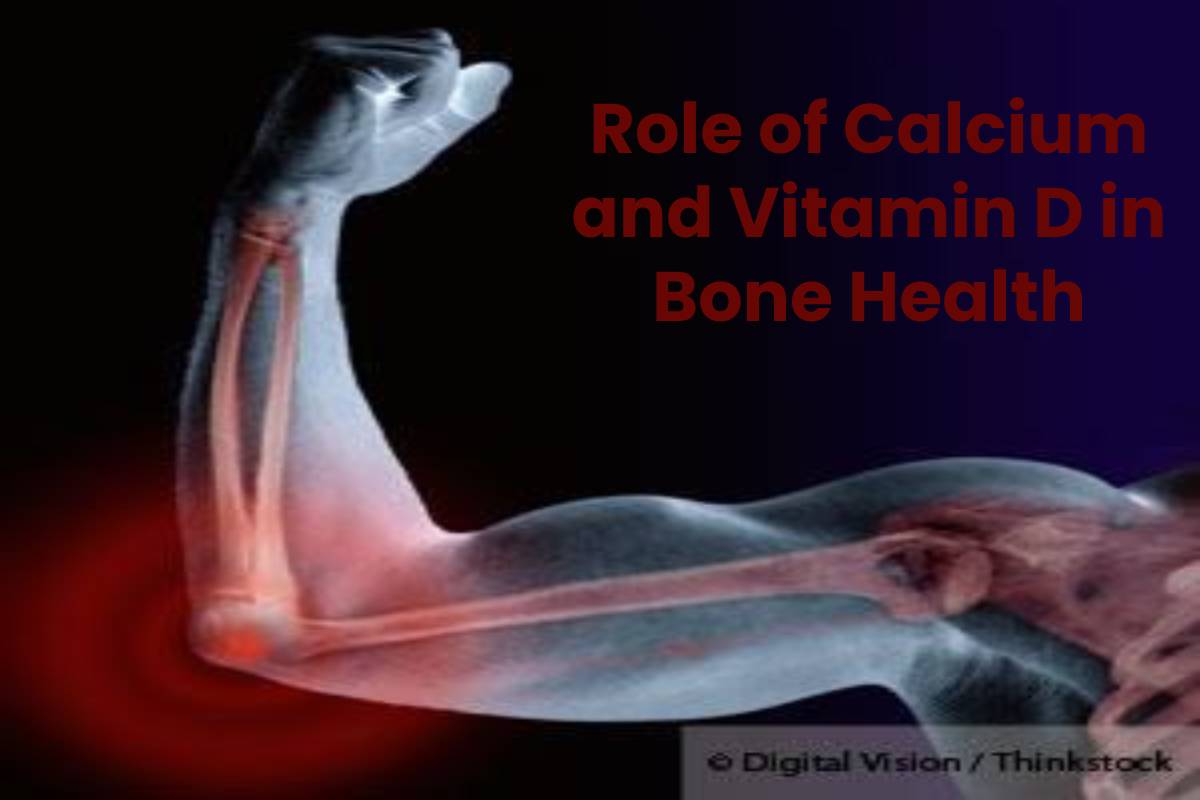Role of Calcium and Vitamin D
Osteoporosis, defined as low bone mass and alterations in the microarchitecture of the bone that predisposes to fractures, is a disease that assumes pandemic characteristics and whose prevalence will grow markedly in the coming decades throughout the world, but especially in Asia and Latin America. Although the development and maintenance of average bone mass depend 70% on genetic factors, environmental factors (such as exercise and nutrition) are essential. They can remain favourably modified at the population level with appropriate educational and cultural measures.
Similarly, This review aims to review calcium metabolism and present the available evidence on the role that this nutrient (and vitamin D, crucial for its correct availability) has in developing and maintaining a healthy skeleton. On the pathophysiological importance of chronic calcium deficiency. As well as, In the development of osteopenia in children. Young people, adults and the elderly. And on the beneficial effect of supplementation with calcium. (and sometimes vitamin D) In the prevention and treatment of osteoporosis.
Table of Contents
General Metabolism of Calcium
The calcium metabolism scheme summarized in Figure 1 contains estimated figures for a typical subject weighing 70 kg at the end of skeletal development in calcium balance (ingested calcium equals that excreted in faeces and urine). The scheme involves three organs (kidney, bones and intestine) connected by the mass (pool) of exchangeable calcium.
The kidney fine-tunes calcium, which is a part of the exchangeable calcium pool. Urinary calcium excretion involves ultrafiltration of 100 ml of plasma per minute. The calcium concentration in the ultrafiltrate is approximately 5 mg/dl. The skeleton is the deposit of the ion: it accumulates 99% of the body’s calcium. Two calcium fluxes involved in tissue formation and resorption are significant for homeostasis. In the absence of diseases of bone metabolism, these processes are coupled in a 1: 1 ratio.
The intestine is the great disturber of the system (its calcium content ranges from 150 mg in fasted subjects to 1,200 mg after a calcium-rich intake) with only slight changes in calciuria. It also allows the surplus to remain excreted without using the kidney.
Extracellular Space
The physical location of the exchangeable calcium compartment is the extracellular space. The one recently deposited on the bone apatite crystals plus the intracellular calcium deposit (Fig. 1).
The net absorption of calcium is defined as the difference between calcium intake and excreted via the faeces. Net calcium absorption is related to intake. In normal subjects, net absorption is 20% to 25% of intake when it is in the range of 300 to 2,000 mg per day. With calcium intakes below 300 mg / d, net absorption is usually negative due to the flow of calcium into the intestine called endogenous faecal calcium.
Endogenous faecal calcium is calcium from digestive juices (succus entericus). These juices are the result of the balance of fluid secretion and reabsorption. perfusing segments of the small intestine, it has remained found that the concentrations of Na + and K + do not differ from those of the serum; the bicarbonate concentration is low in jejunum and high in the ileum, and the opposite occurs with chloride 1. Though it has not remained proven by certainty for man, in some species, it has remained established that calcium is also secreted by the colon 2.
The mass of calcium that can remain excreted as endogenous faecal calcium can be critical. In adult celiacs, in whom poor absorption would restrict reabsorption, Melvin measured 324 mg / d, more than double that of normal subjects (136 mg / d) 3.
The difference between net calcium absorption and endogenous faecal calcium is called accurate absorption. This fraction depends on the status of the intestine cells and the levels of vitamin D. With a diet low in calcium (<350 mg / d), its value is exceeded by that of endogenous faecal calcium, which leads to negative calcium balances. The reader must be attentive to the units associated with the vectors. With a diet low in calcium, the proper absorption will be minor or very small if expressed in mg / d. The adaptation of the intestine to such diets remains manifested by an increase in absorptive efficiency, which can reach 60% of ingested calcium.
Effects Of Vitamin D On The Intestine
Role of Calcium and Vitamin D – The calciferol endocrine system has as its leading actor 1α, 25-dihydroxy vitamin D, a steroid hormone. This steroid acts on the intestine by genomic and non-genomic routes
The genomic pathway follows a very well-characterized mechanism, similar to that of other steroids. The hormone binds to a receptor: a high-affinity intracellular protein present in the nucleus, activated by this phenomenon. The hormone-receptor complex binds to regulatory sequences of nuclear DNA. It controls the transcription of specific messenger RNAs that in turn influence the synthesis of particular proteins (osteocalcin, alkaline phosphatase, collagen, calbindin-D, etc.). Besides, Calbindin-D promotes calcium absorption by facilitated diffusion: calcium-binding at the brush border or luminal surface (incorporated by calcium channels or transporters). And transfers the calbindin-Ca complex to the basement membrane, where it moves the ion to a Ca-ATPase pump that dumps it into the circulation.
The effects on cell proliferation
By modulating the cytosolic calcium concentration and the synthesis of proto-oncogenes, cell proliferation and differentiation remain also regulated. The effects on cell proliferation and differentiation are evident 1-2 hours after hormone binding to the receptor. The process of cellular proliferation and differentiation remains manifested in increasing the number and improving the functions of cells of microvilli 4.
The non-genomic pathway modulates a rapid calcium transport called transcaltaquia 5. That involves the opening of calcium channels operated by the voltage. Across the membrane, six vesicular calcium transport-related with the polymerization of microtubules , seven that mark the traffic path between membranes. The membrane receptor of the non-genomic pathway is peculiar because it is related to the cytosol (they bind the same steroid: 1,25-dihydroxyvitamin D), but with a different protein domain linkage 8.
The processes that participate in the intestinal absorption of calcium represent the first step for the entry of calcium from the diet in the physiological processes that contribute to both skeletal growth and calcium homeostasis.
There is a significant variation in men’s calcium intake (300-1,500 mg / d) and physiological needs throughout life (growth, puberty, pregnancy, lactation, and menopause). To ensure the recovery of calcium after the day-to-day diet, the intestine must adapt simultaneously to the diet’s physiological changes. The endocrine system of cholecalciferol perfects these processes.
Methods For Measuring Intestinal Calcium Absorption
Specific Techniques
Calcium Balance.
Moreover, It requires the existence of a metabolic unit with trained personnel. Subjects receive constant composition diets for one week (if their usual diet differs from that of the test), allowing the subject to balance with the diet. Credit remains measured over the next seven-day period to reduce the daily variance. As well as, A duplicate of the diet is tested daily for its mineral content as defecation occurs at irregular intervals. Subjects are continuously given capsules with a nonabsorbable tracer substance to check how complete the collection was and define the time interval after completion. The collection of urine to conclude the accumulation of faeces. These remain weighed and homogenized. The analyses remain an aliquot, the residue of which (after taking it to dryness and incineration) remains dissolved in an acid solution. The difference between intake and excreta (faeces + urine) defines the balance.
Net Absorption.
This technique is more straightforward than the previous one. After a 12-hour fast, the subjects remain subjected to intestinal lavage with an iso-osmotic solution. Equally, Whose composition does not affect the absorption or excretion of ions. Besides, Four hours after washing, the subjects ingest a diet with a known amount of nonabsorbable tracer. Twelve hours after ingestion, the washing is repeated, collecting the effluent. The difference between the mineral content of the diet and the faecal excretion defines the net absorption. The study can be repeated on another day, when only the tracer remains ingested, to measure fasting faecal excretion.
Proper Calcium Absorption.
An amount of 47 Ca (gamma emitter) is administered orally. And another dose of 45 Ca (beta emitter) remain administered intravenously. Laboratories with a thermal ionization mass spectrometer can use two non-radioactive isotopes: 42 Ca and 44 Ca 9. Although, The orally administered isotope serves to trace the radioactivity curve in plasma, a consequence of absorption. As in the short term, the height and slope of this curve depend on bone turnover and renal excretion. The calculation of intestinal absorption requires a correction that remains estimated with the isotope administered intravenously. And that (due to the operation performed) remains fully considered absorbed.
Suppose the patient is in equilibrium conditions and blood samples remain obtained to measure radioactivity during the next 48 hours. In that case, all the calcium fluxes and the magnitude of the exchangeable calcium pool can remain determined using one of several available mathematical models and included in figure 1.
Fractional Absorption of Calcium.
Similarly, A standard dose of non-radioactive calcium ( carrier, 1 gram) stay administered orally, along with 47 Ca. The absorbed fraction (percentage) of the amount can remain determined by measuring the radioactivity of the stool.
Absorption is Defined Intestinal Segments
Role of Calcium and Vitamin D – Although, This technique has remained used to investigate succus entericus 2. After 12 hours of fasting, the subject remains intubated with a triple lumen catheter. The probe is radiopaque, and the position of its distal end remains controlled by fluoroscopy. Likewise, The infusion fluid (containing a nonabsorbable marker) stay instilled at a constant rate through the proximal tube. And withdrawn through the distal line at the same rate. A 30 cm section of the intestine remains perfused. In the same way, The absorption rate remains calculated from the difference in calcium concentration (or other ions or molecules) between the inlet and outlet liquids.


